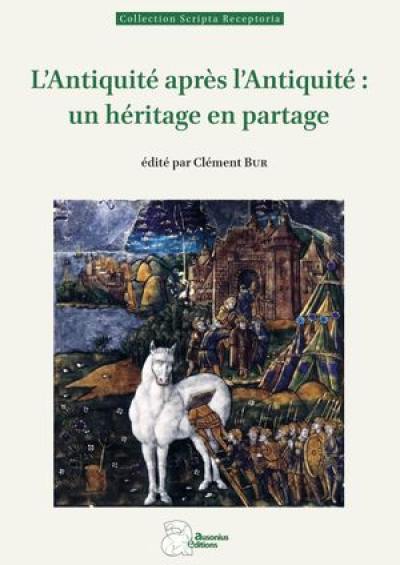
Fiche technique
Format : Broché
Nb de pages : 277 pages
Poids : 548 g
Dimensions : 18cm X 25cm
ISBN : 978-2-35613-606-0
EAN : 9782356136060
L'Antiquité après l'Antiquité
un héritage en partage
actes du colloque organisé pour les 15 ans d'Anabases, traditions et réceptions de l'Antiquité tenu à Toulouse en 2021-2022
Quatrième de couverture
L'Antiquité, classique ou non, ne disparaît pas avec ce que l'on a coutume d'appeler « la fin du monde antique ». La Grèce et Rome, entre autres, constituent pour longtemps encore un legs culturel, politique et esthétique identifiable, fécond. Nous Modernes continuons de le « recevoir », de le mettre en débat, de le repenser ou reformuler sur nos places publiques ou nos écrans, dans nos livres ou notre langue. Nous questionnons et nous représentons ce passé, dans un va-et-vient entre mise à distance et appropriation, et nous analysons ces mémoires à partir d'une question simple : qu'advient-il de l'Antiquité après l'Antiquité ?
Pour célébrer les quinze ans de la revue Anabases, seule revue française consacrée à la réception de l'Antiquité, un colloque fut organisé témoignant de la diversité des époques abordées, des aires géographiques, des disciplines, des approches et des traditions universitaires. En effet, l'étude de « l'Antiquité après l'Antiquité » ne peut qu'être interdisciplinaire, transversale, plurielle. La littérature, la philosophie, l'art sous toutes ses formes, la culture populaire ont affaire avec la capacité de transformation, d'adaptation, de résilience dont l'Antiquité est capable. L'Antiquité est un savoir à géométrie variable, modulable, un savoir qui a lui-même sa propre histoire, ses propres traditions.
Les contributions de ce volume, qui brossent la « fabrique de l'Antiquité », explorent la bibliothèque de Guillaume Budé et des travaux d'antiquaires comme Sainte-Croix ou Choiseul-Gouffier, offrent une réflexion sur la tâche des antiquisants et sur l'influence de Braudel sur ceux-ci mais aussi de Virgile sur Giono et de l'histoire ancienne sur la Chronica Polonorum du XIIIe siècle, examinent la transmission des textes des géographes antiques, la traduction de Sophocle par Hölderlin ou encore la passion pour les Étrusques de D.H. Lawrence, l'émergence de l'étrusquicité au XVe siècle, ou l'invention du paysage archéologique d'Ostie.
Antiquity, classical or otherwise, did not disappear with what is commonly referred to as "the end of the ancient world". Greece and Rome, among others, will provide us with an identifiable and fertile cultural, political and aesthetic legacy for a long time to come. We moderns continue to "receive" Antiquity, to debate it, to rethink or reformulate it in our public squares or on our screens, in our books or in our language. We question and represent this past, shuttling back and forth between distancing and appropriation, and we analyse these memories on the basis of a simple question: What becomes of Antiquity after Antiquity?
To celebrate the fifteenth anniversary of the journal Anabases - the only French journal on the reception of Antiquity - a colloquium was organised, reflecting the diversity of periods, geographical areas, disciplines, approaches and academic traditions. The study of "Antiquity after Antiquity" must needs be interdisciplinary, cross-disciplinary and pluralistic. Literature, philosophy, art in all its forms and popular culture all have to do with the capacity for transformation, adaptation and resilience that Antiquity is capable of. Antiquity is versatile knowledge; knowledge that has its own history and its own traditions.
The contributions of this volume describe the "factory of Antiquity". They explore the library of Guillaume Budé and the work of antiquarians such as Sainte-Croix and Choiseul-Gouffier; they offer reflections on the task of the historians who study Antiquity and the influence of Braudel on them, but also of Virgil on Giono and of ancient history on the thirteenth-century Chronica Polonorum; the proceedings examine the transmission of the texts of ancient geographers, Hölderlin's translation of Sophocles and D.H. Lawrence's passion for the Etruscans, the emergence of Etruscanism in the fifteenth century, and the invention of the archaeological landscape of Ostia.





